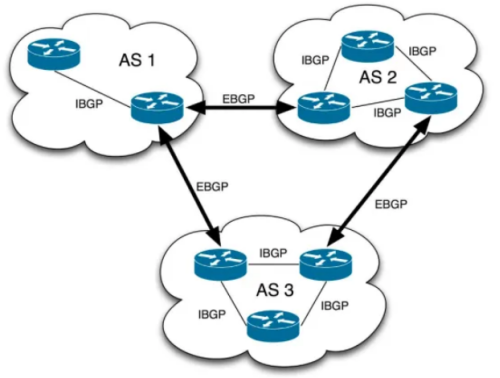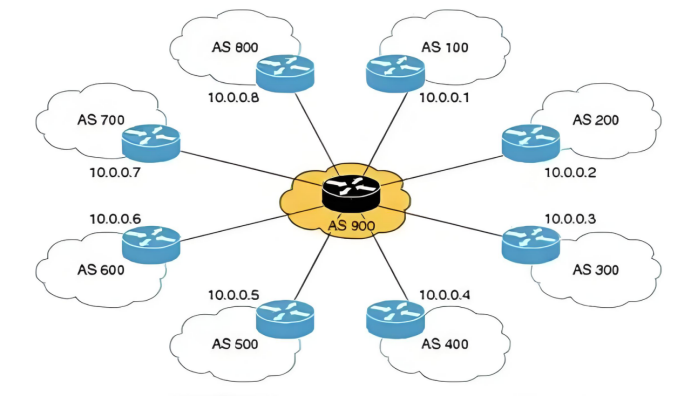Does Shutting Down a Directly Connected EBGP Neighbor Immediately Terminate the BGP Session? Let’s Investigate!
If you want to get more information, scan the QR code below to contact customer service.

In the complex operational environment of the Border Gateway Protocol (BGP), the stability and termination mechanisms of neighbor sessions play a critical role in ensuring normal network operation and accurate routing information propagation. Notably, directly connected EBGP neighbors exhibit distinctly different behavioral patterns compared to other types of BGP peers when subjected to interface shutdown operations under specific configurations, which warrants in-depth investigation.
Technical Context:
·EBGP Behavior: Directly connected EBGP peers typically rely on physical interface status for session establishment. A shutdown command often triggers immediate session termination due to TCP connection loss.
·Non-Direct Peers (e.g., multihop EBGP or IBGP): Sessions may persist until hold timers expire, as their connectivity depends on logical reachability rather than direct links.

When only directly connected EBGP neighbors exist in a network environment, and the ebgp-interface-sensitive command is enabled in the BGP configuration (this command is enabled by default, with its core functionality being the immediate termination of BGP sessions established on directly connected external neighbors via an interface when its state transitions to Down), performing an interface shutdown operation will instantly disconnect the BGP session.
This mechanism is designed to rapidly respond to physical link failures or manual interface shutdowns in directly connected EBGP neighbor scenarios, ensuring fast network topology convergence and timely routing updates.
Example Scenario
Consider two directly connected border routers from different autonomous systems (AS). If one router’s interface is shut down due to hardware failure or network maintenance needs, the enabled ebgp-interface-sensitive command ensures:
1. Immediate termination of the BGP session.
2. Both routers quickly detect the neighbor state change.
3. Avoidance of routing inconsistencies, stale routes, or potential network loops caused by prolonged waiting.
Critical Applications
This mechanism is particularly vital for environments demanding ultra-high network real-time performance, such as:
·Financial transaction networks (millisecond-level latency tolerance).
·Data center backbone interconnects (requiring minimal service disruption).
By minimizing downtime caused by network failures, it ensures service continuity and operational reliability.
Technical Breakdown
Feature | Description |
ebgp-interface-sensitive | Default-enabled command that ties BGP session status to interface state. |
Immediate Session Termination | Triggered by interface shutdown, bypassing hold timer delays. |
Fast Convergence | Enables rapid withdrawal of invalid routes and adoption of backup paths. |
Loop Prevention | Eliminates stale routing information that could cause black holes or loops. |

However, in other scenarios and with other types of BGP peers, the BGP session does not terminate immediately upon interface shutdown. Instead, it waits for the Hold Timer to expire. The Hold Timer is a critical mechanism in BGP for maintaining neighbor relationships. If no BGP messages (e.g., Keepalive or Update messages) are received from a peer within the configured interval, the session is declared invalid and terminated. This more conservative disconnection mechanism accommodates diverse network topologies and BGP peer types.
Examples and Rationale
1. IBGP Neighbor Scenarios
·In internal autonomous systems (AS), network architectures are often complex, with redundant paths and intermediate devices.
·A temporary interface shutdown may not indicate permanent neighbor failure.
·Wait for Hold Timer: Allows time for transient faults to self-recover or for routes to reconverge, avoiding:
Frequent network oscillations caused by overly sensitive disconnections.
Unnecessary route recomputation and instability.
2. Non-Direct EBGP Neighbors
·For multihop EBGP peers (e.g., ebgp-multihop configured), paths may traverse multiple hops and devices.
·Shutting down a single interface may only affect a localized link, not the overall neighbor reachability.
·Hold Timer Dependency: Ensures a holistic evaluation of network stability before terminating sessions.
Implications for Network Management
1.Design and Deployment Considerations:
·Configure ebgp-interface-sensitive judiciously based on:
Network topology (direct vs. non-direct peers).
Business requirements (e.g., low-latency financial networks).
·Balance stability and fault recovery by adjusting Hold Timer values.
2.Troubleshooting Guidance:
·Immediate Disconnection: Likely caused by direct EBGP neighbors with ebgp-interface-sensitive enabled.
·Hold Timer Timeout: Indicates non-direct peers or IBGP neighbors.
Rapidly identify root causes to streamline fault resolution.
Mechanism Comparison
Scenario | Disconnection Trigger | Key Purpose |
Direct EBGP + ebgp-interface-sensitive | Immediate (interface state) | Fast convergence for critical links |
IBGP/Non-Direct EBGP | Hold Timer expiration | Stability in complex topologies |
Conclusion
The disconnection behavior of BGP sessions post-interface shutdown varies significantly depending on peer types and configurations:
·Direct EBGP peers with ebgp-interface-sensitive enable instant termination for rapid fault response.
·IBGP/Non-Direct EBGP rely on Hold Timer expiration to avoid premature disruptions.
Mastering these mechanisms is essential for:
·Building efficient, stable, and reliable BGP architectures.
·Ensuring service continuity and minimizing downtime.
·Enhancing troubleshooting efficiency in mission-critical environments.
For more BGP resources, follow the Facebook account&youtube account: Thinkmo Dumps


